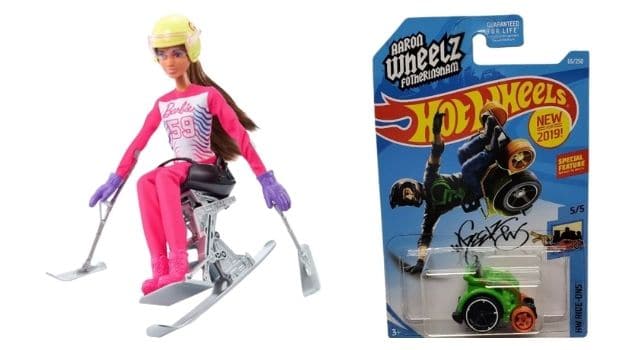My name is Brendan, and I’m a Patient Advocate here at 180 Medical. I often visit with patients who are new to living with a disability or families of kids with spina bifida. Recently, someone brought up a question to me: Why does disability representation matter?
Seeing others with disabilities is important for many reasons. As someone living with spina bifida, I firmly believe that representation matters in all areas of life, especially for kids and adolescents with disabilities or different needs.
Why Disability Representation Matters
When we’re young, we often hear that we can accomplish anything we want in our lives. However, until we see others like us doing those activities, it can sometimes be hard to imagine the true possibility of seeing our dreams coming true.
Growing up with spina bifida, I can speak to this being overwhelmingly true. I was the only one in my entire grade of over 400 kids who had a physical disability. Needless to say, I only had able-bodied individuals around me daily for comparison.

Of course, you don’t necessarily need other people with disabilities around you on a day-to-day basis for inspiration. Motivation and drive also come from within.
However, seeing real-life examples of people succeeding when dealing with a similar situation certainly provides a new level of validation that anything is possible for anybody.
Disability Representation in the Media
When it comes to the representation of actors and characters with disabilities on TV, there have been some positive changes in recent years.
Unfortunately, a lot of the time, able-bodied actors play characters with disabilities. For example, NBC’s “Superstore” features a character in a wheelchair named Garrett, who is played by the able-bodied actor Colton Dunn.
While the inclusion of characters with disabilities is great, what message are we sending when those non-disabled actors take those roles?
An example where the actors have the disability they portray on screen is in the show “Breaking Bad.” The character Walter White Jr. is living with cerebral palsy. The actor, RJ Mitte, also has cerebral palsy in real life.
Because our society is influenced by what we all see on our screens, the objective in casting these roles should be to use authentic representation. It’s also important to include as many disabilities and conditions as possible, including physical, cognitive, visual, auditory, and speech-related disabilities. A recent example of inclusive children’s programming on TV today is “Sesame Street,” which features a character with autism named Julia.
Often in TV/film, these characters are labeled as “handi-capable,” which is one way of describing it. I prefer to call it what it actually is: people with disabilities who are breaking down stigma and stereotypes.
Working Toward Greater Inclusion
Through representation, our society may begin to have a successful, lasting transformation in how individuals with disabilities are seen and treated. Plus, it should have a positive impact on those of us with disabilities in terms of recognizing our own capabilities.
The more we focus on the talent, skills, and contributions of those characters with disabilities, the more our youth will look towards the positive qualities of the individual as they grow up.
Of course, inclusion and disability representation on TV and in movies should not be the only aspiration.
Real change, growth, and lasting impact will only happen when people can view those with disabilities in the same light as their able-bodied peers.
If we make a conscious effort in our daily lives to maximize inclusion, it will undoubtedly make it easier for those with disabilities to pursue their life goals. Eventually, we may live in a society that is more respectful, supportive, and understanding.
Recently there have been groups that have done some pretty amazing work toward this inclusion. For example, in the world of toys, we’re seeing more representation such as Para-Skiing Barbie and Hot Wheels Aaron “Wheelz” Fotheringham, pictured below.

Plus, we’re seeing more mainstream media coverage of major sporting events like the Paralympics.
However, as an adult living with a disability, more than anything, I look forward to the day when inclusion is normal rather than groundbreaking.
Remember, inclusion doesn’t happen just because someone is part of a team. It happens when you value, respect, and appreciate someone, regardless of what makes them different.
Resources for a More Inclusive World
Want to learn more about inclusion and ways to promote it? Here are a couple of websites for more resources:
RespectAbility
This nonprofit organization works to fight stigma and advances opportunities for more people with disabilities to participate in their communities.
WeThe15
People with disabilities make up around 15% of the global population. WeThe15 works to shine a light on this 15% of the population by breaking down barriers for people with disabilities in sports, arts, entertainment, and more.